Off-Page SEO: The Complete Guide
Chapter 1:Off-Page SEO Fundamentals
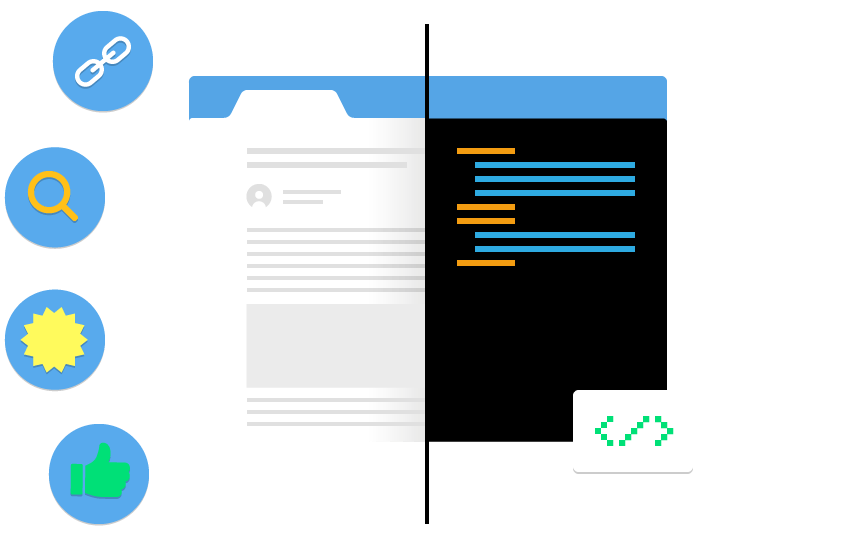
Let’s start things off with a quick review of the basics.
Specifically, I’m going to share what off-page SEO is and why it’s important in 2025.
You’ll also learn the major differences between off-page SEO and on-page SEO.
What Is Off-Page SEO?
Off-page SEO includes activities done off of a website in an effort to increase the site’s search rankings.
Common off-page SEO actions include building backlinks, encouraging branded searches, and increasing engagement and shares on social media platforms.
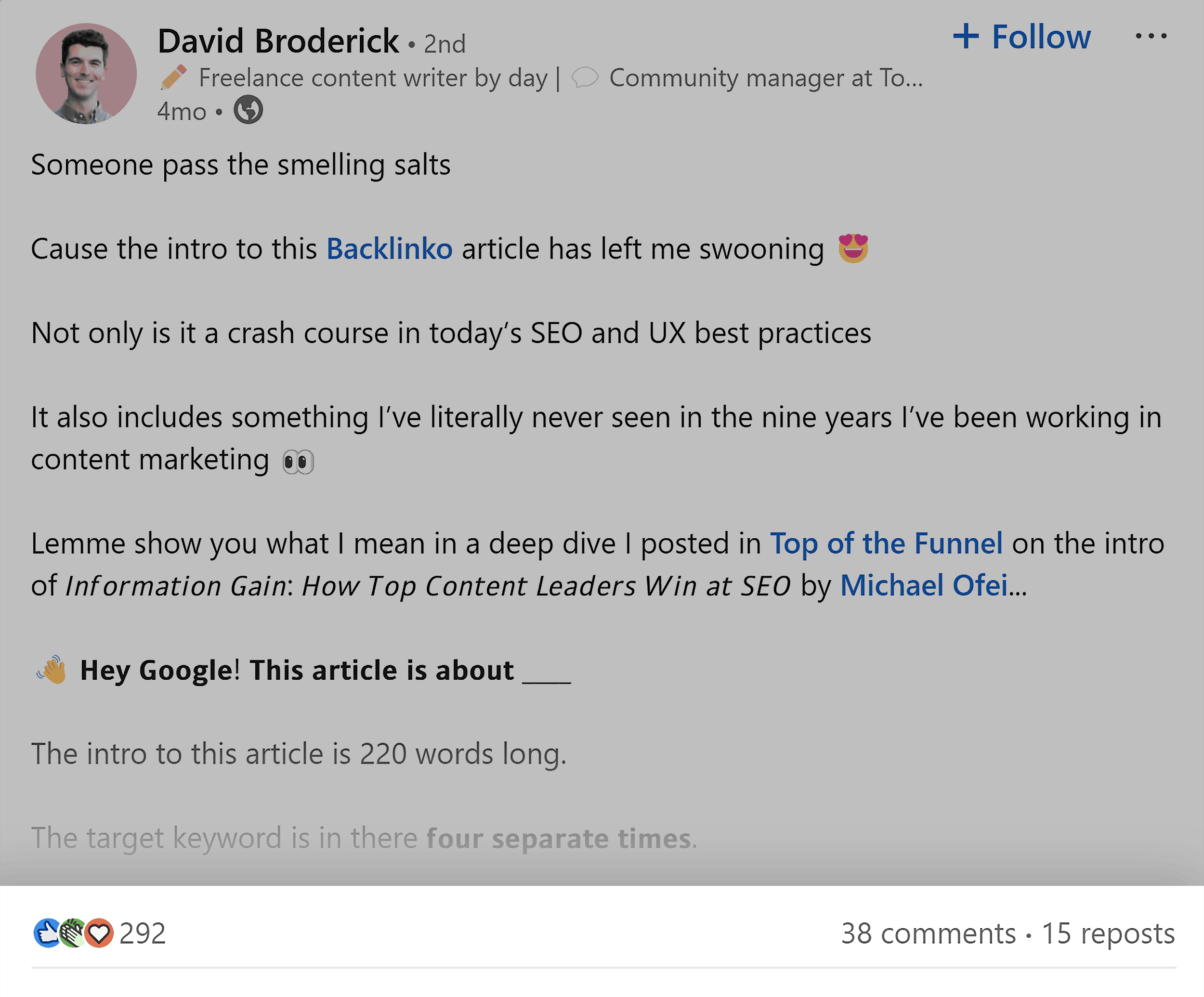
In other words:
Off-page SEO is all the stuff you do off of your site to get Google and other search engines to see your website as trustworthy and authoritative.
Download our free off–page SEO checklist and check off the boxes as you complete each task.
Why Is Off-Page SEO Important?
Backlinks and other off-site signals still form the foundation of Google’s algorithm.
In fact, our 2020 search engine ranking factors study found a clear correlation between total backlinks and Google rankings.

On its site, Google says PageRank is part of its core ranking systems.

That said: links are only one part of off-page SEO.
Google states that they use other off-site SEO signals to size up your website.

For example, Google’s Quality Rater Guidelines emphasize a site’s off-site reputation to figure out whether or not that site can be trusted.
(They call this “Reputation Research.”)
“Reputation Research” includes looking at online reviews:

Recommendations from experts:

And mentions on authority news sites and Wikipedia.

Google’s Quality Raters are told to look beyond what websites claim about themselves and instead find what others say about them.
The guidelines state that, especially for Your Money Your Life (YMYL) topics, reputation information should come from expert sources.
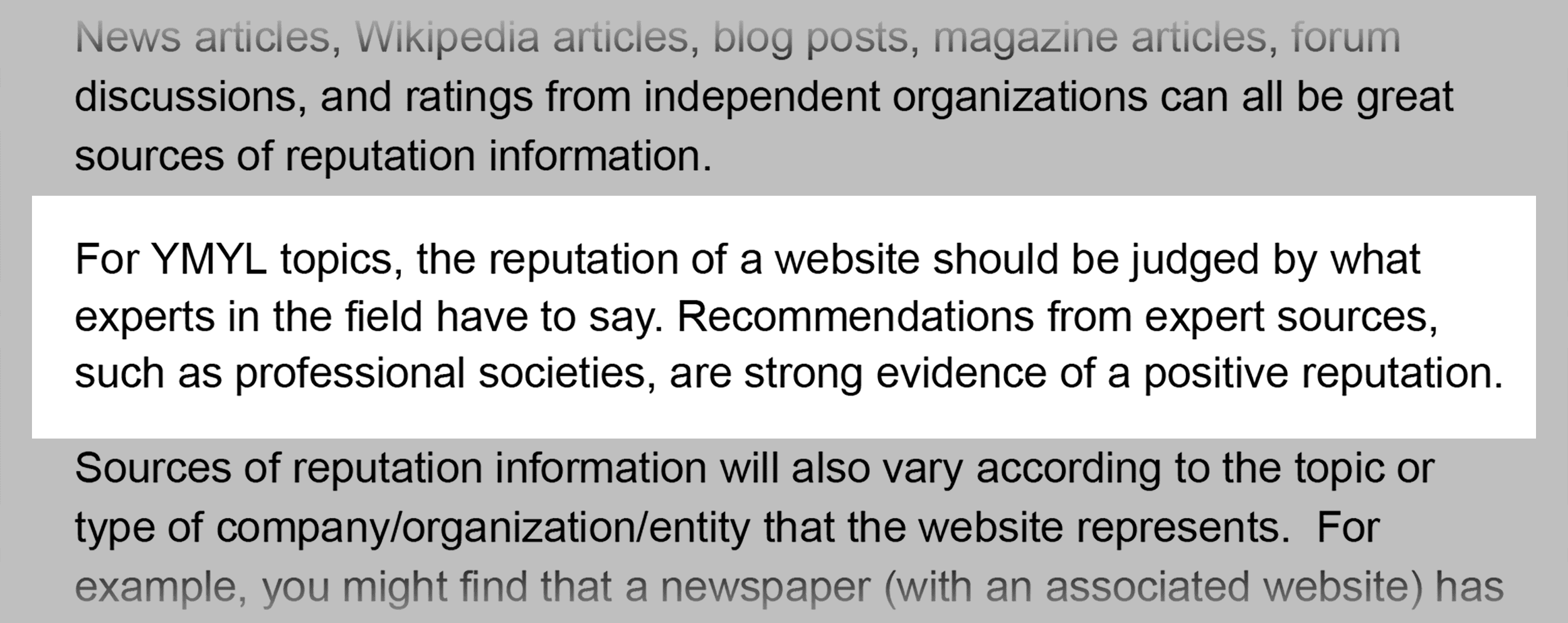
The bottom line? Links are one of the most important off-page SEO signals. But they’re one of many.
I’ll cover links and the other off-site factors you need to know about in the rest of this guide.
But for now, it’s time to learn about…
On-Page SEO vs. Off-Page SEO
On-page SEO is everything you can directly control on your website.
This includes content, title tags, keyword usage, SEO-optimized URLs, internal links, and image alt text.
Off-page SEO includes actions that happen away from your website.
Like links and mentions on other websites.
For example, we published this list of SEO tools.

And to optimize that page, we used the main keyword in the title tag, URL, and a handful of times in the content.
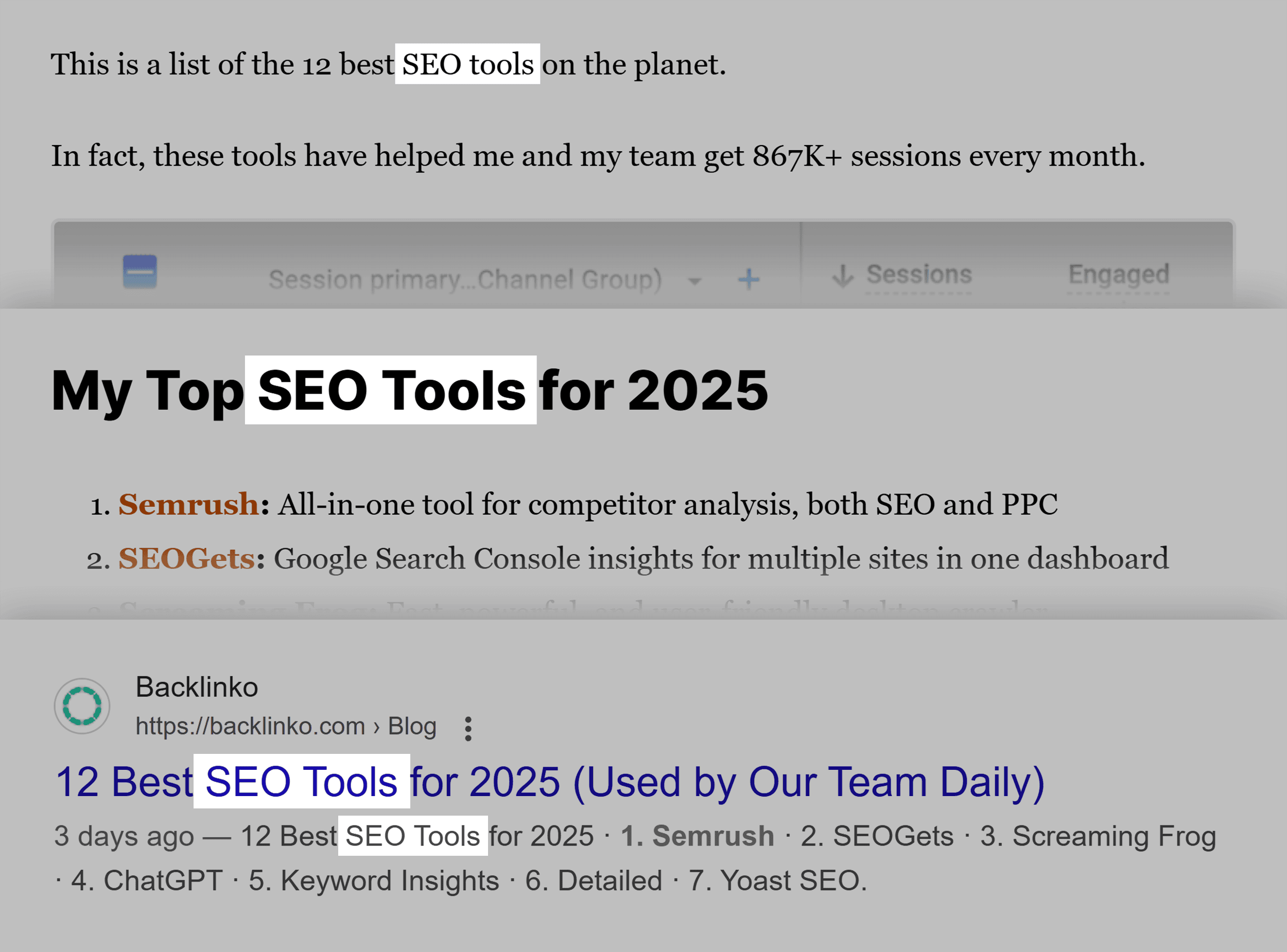
We also sprinkled in synonyms and LSI keywords to help Google understand the content of that page.
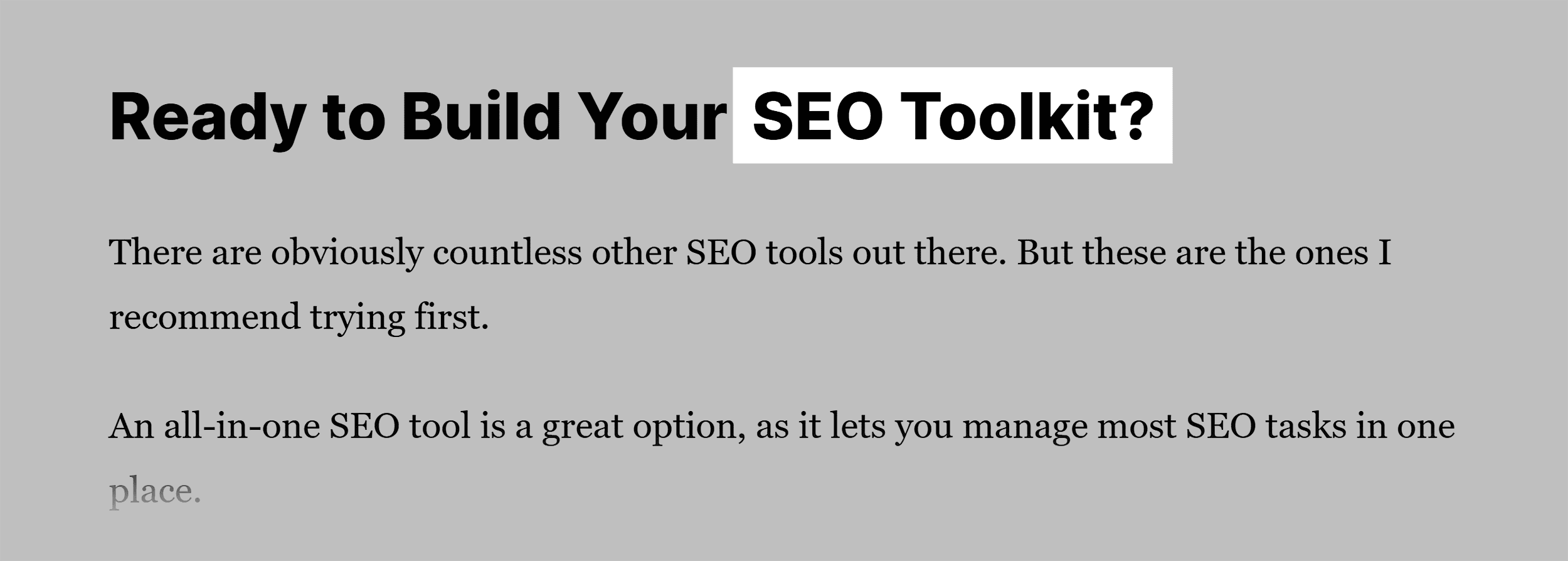
Even though that page was “perfectly optimized,” the job was far from done.
The target keyword for that page at that point had a Semrush keyword difficulty score of 94.
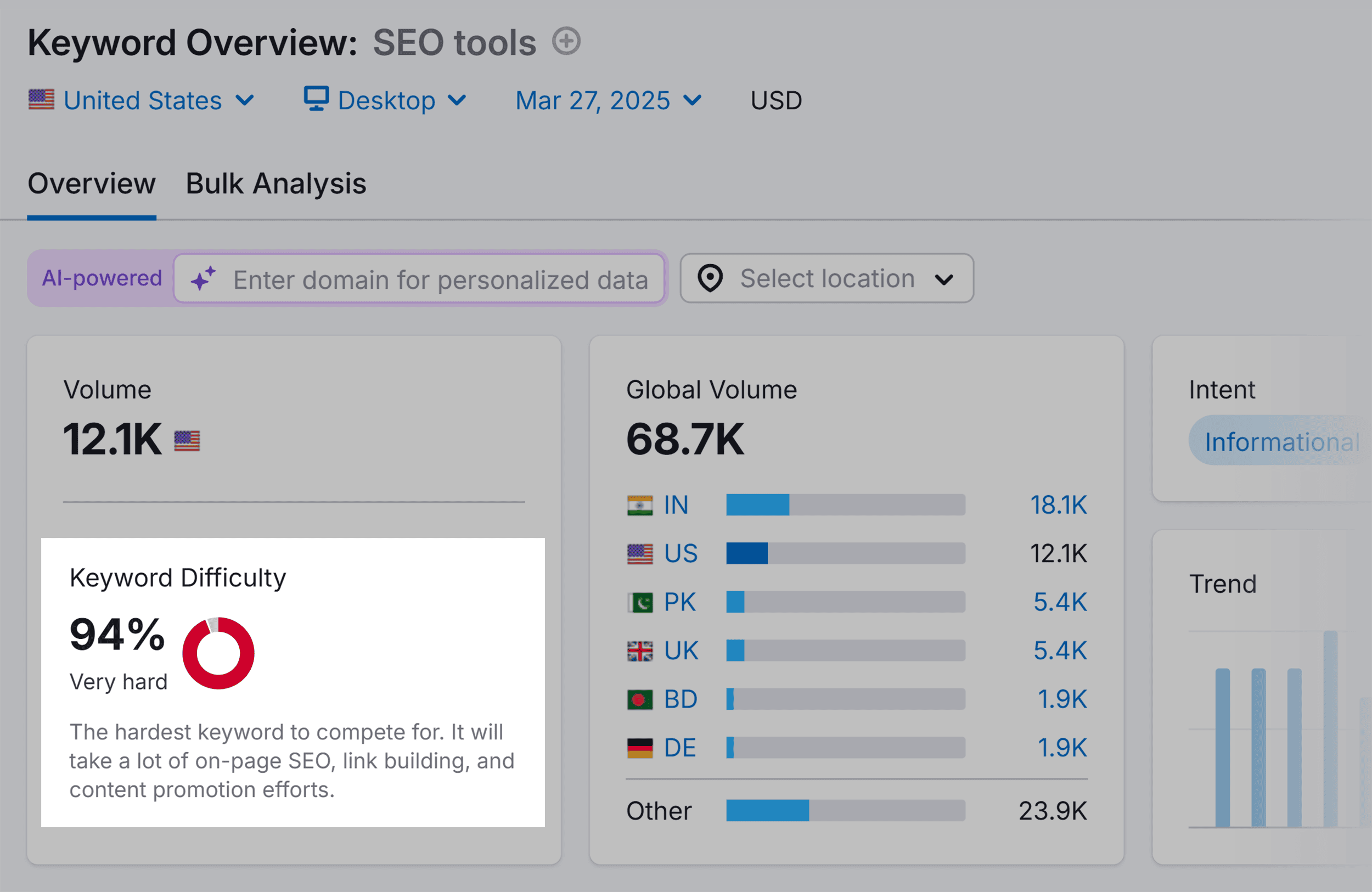
This meant to rank that page on the first page of Google for that keyword, we needed some serious off-page SEO.
This is why I promoted that post on social media.
And used email outreach to build links directly to that page.
Because we combined on-page and off-page SEO, this page now ranks in the top 3 for that keyword.
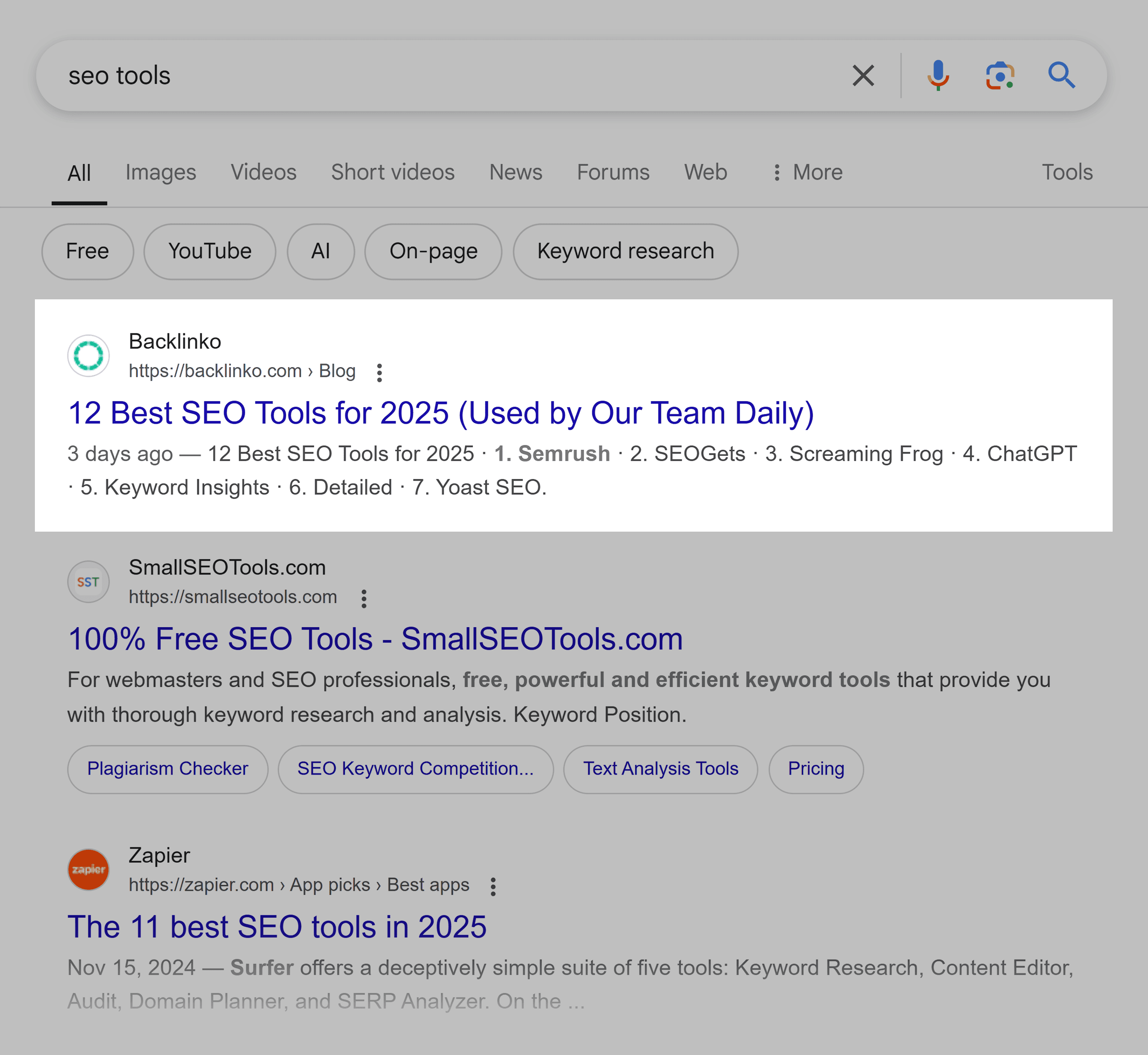
With that, let’s get into the strategies you can use to improve your site’s off-page SEO.
Chapter 2:Boost Off-Page SEO With Backlinks
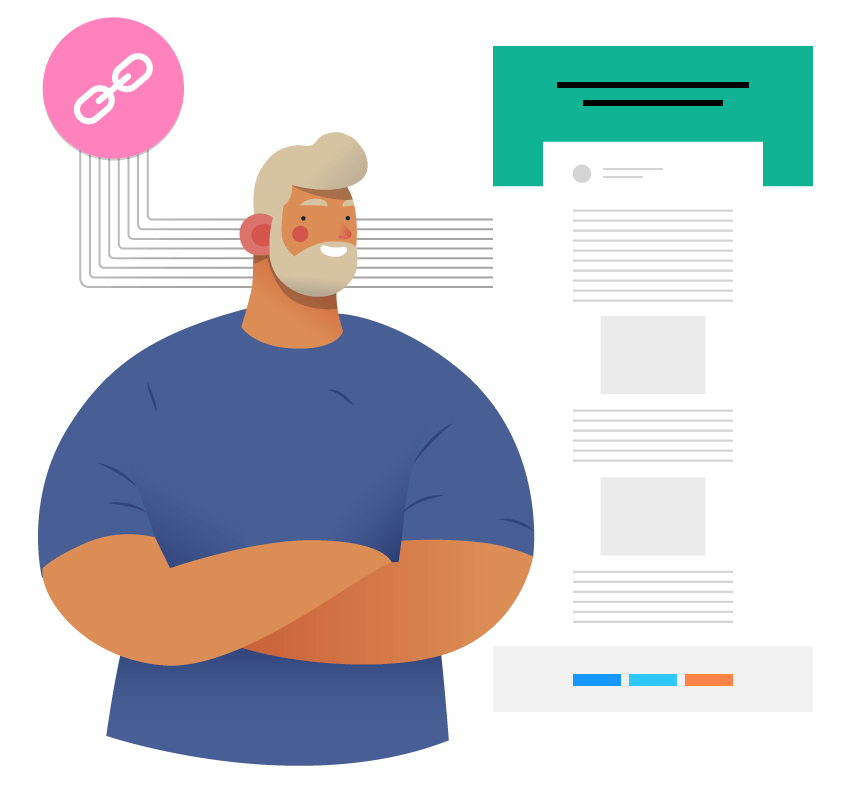
When it comes to off-page SEO, backlinks are SUPER important.
That said:
Building backlinks for off-page SEO is all about quality…not quantity.
And if you want the links you build to actually boost your rankings in the SERPs, they need to be authority links from related sites.
In this chapter, I’ll show you four ways to build authoritative links that are working great right now.
Be a Data Source
A while ago, I was looking at the links pointing to Moz’s keyword research guide.

And I noticed something REALLY interesting.
The vast majority of that page’s links cited a specific stat from that page (that long tail keywords make up 70% of all searches).
Here’s an example:

In other words: People didn’t link to the page because it was a piece of “high-quality content.”
They linked to cite a stat on the page.
That’s when it hit me:
What if I added more stats to my site? Would that get more people to link to me automatically?
So I decided to put this little hypothesis to the test.
Specifically, I invested a ton of time and money into creating this giant list of email marketing stats.

And I optimized it around a keyword that bloggers and journalists search for when they’re researching a topic: “email marketing stats.”
Sure enough, within a few weeks, the article started to crack the first page.
And a few days after that, I got my first link.

Nice!
Try Broken Content Building
This is a twist on traditional broken link building.
With most broken link-building campaigns, you look for broken links that point to a specific page.
The problem is finding broken pages in your niche can be a huge pain.
Enter: Broken content linking.
With broken content linking, you use Semrush Site Audit as a broken link search engine.
Then, use traditional BLB to build links to your site.
For example, some time ago, I published this comprehensive email marketing guide.

All I need to do is plug in the domain of a competitor or a popular site in my niche to Semrush’s Backlink Analytics tool.

Then, check for backlinks to popular pages.
From there, I can use Semrush’s Site Audit to find broken pages that are now dead.
This shows you popular content that’s now dead.
Just like that, I found dozens of pages that I can use for broken link building.
Pro tip: Sign up for a free 14-day Semrush trial to use tools like Backlink Analytics and Site Audit to supercharge your off-page SEO efforts.
Double Down on Information Gain
Will creating content magically send links your way?
No.
But content with high information gain can dramatically increase the odds that people link to you.
Information gain means providing unique insights, analysis, or perspectives that aren’t available elsewhere on the web.
We already touched on original data, but there are other ways to provide information gain.
Such as sharing examples from your personal experiences, original methodologies, step-by-step instructions, and firsthand product testing.
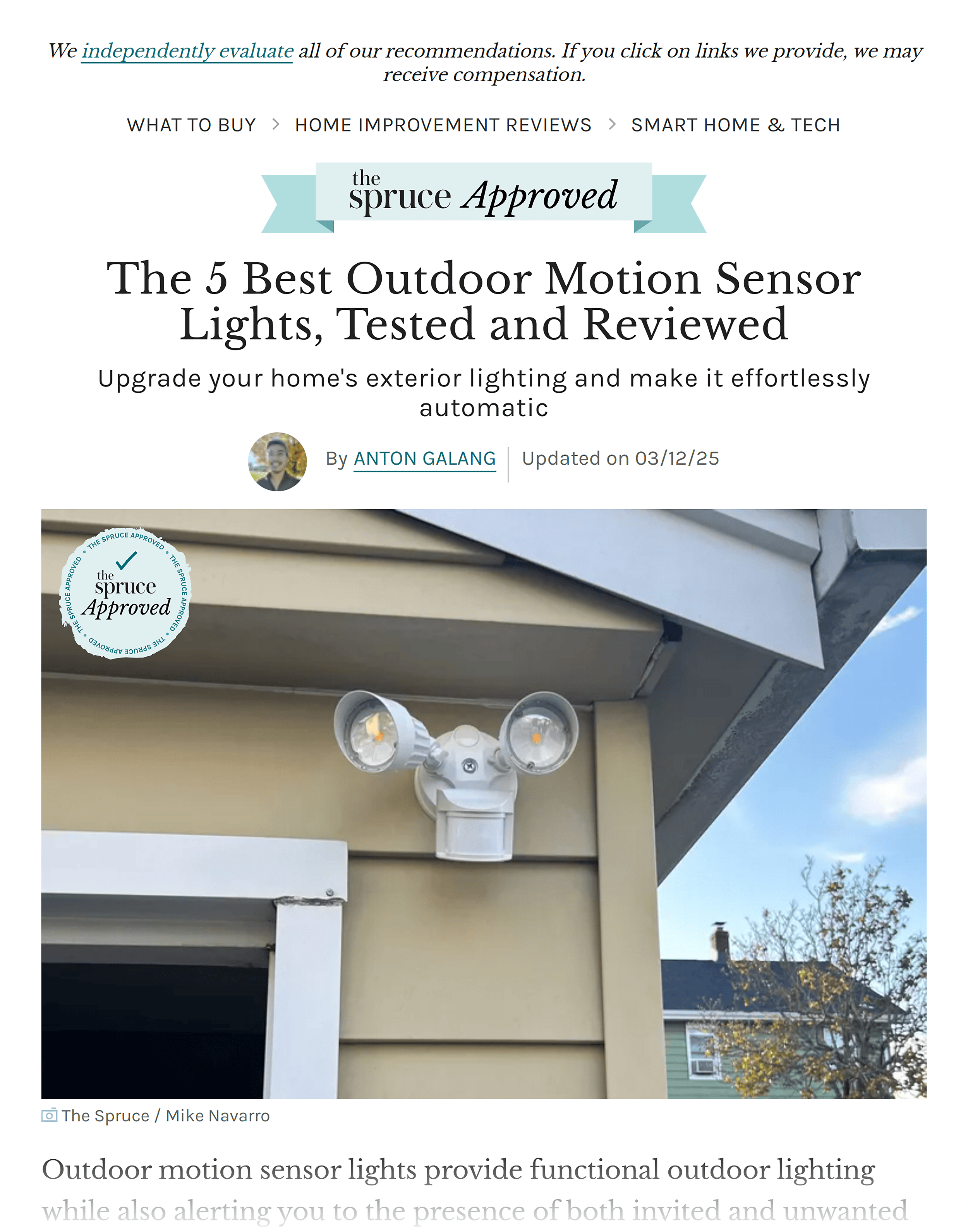
Use Strategic Guest Posting
Guest blogging helps your off-page SEO in a bunch of different ways.
First, guest posts get your brand in front of an entirely target new audience.
(Which helps with branded searches. More on that later.)
Second, guest posts can lead to unlinked brand mentions.

Unlinked mentions aren’t as powerful as a backlink. But they still help.
Finally, you can build high-quality backlinks from your guest posts.

And in my experience, guest post backlinks DO help your rankings.
(In small doses.)
There’s only one caveat:
This really only works if you publish guest posts on authoritative websites in your industry.
Chapter 3:Generate Brand Signals

Now it’s time to cover a SUPER underrated part of off-page SEO:
Brand signals.
Brand signals are what Google uses to figure out if your site is a legit brand.
Or, as the former CEO of Google, Eric Schmidt, famously put it:
“Brands are the solution, not the problem… Brands are how you sort out the cesspool.“
And in this chapter, I’ll show you how to boost your site’s brand signals.
Audit Your Branded Searches
Branded searches are how many people search for your brand on Google.
This can be searched for your exact brand name (“Backlinko”).
Or your brand name plus a word or phrase (“Backlinko SEO tools”).
You can easily find this info in the Google Search Console Performance Report.
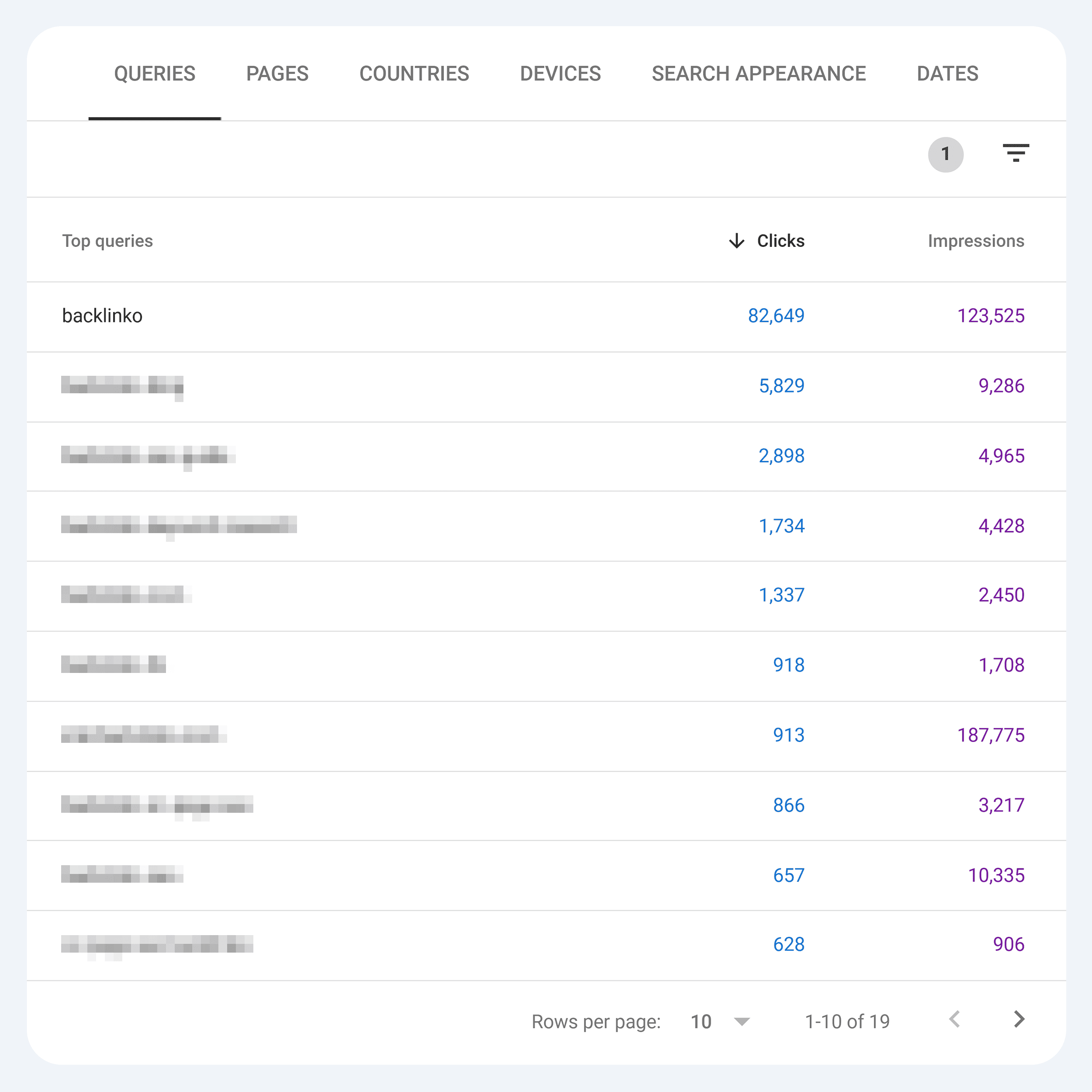
Look at the “Impressions” column for all of your branded searches.
For example, you can see that 123,525 people searched for “Backlinko” over the last 3 months.

So that’s my benchmark.
If I wanted to increase my branded search totals, I’d look to improve this number over the next few months.
Invest in YouTube
YouTube marketing is one of the best ways to boost your site’s brand signals.
(Especially branded searches.)
Why?
Two reasons:
First, your videos can get in front of A LOT of people.
For example, my videos get in front of over 52K viewers every single month.

This leads to more people talking about, covering, and writing about my brand online.

(Plus, having real, popular social accounts may be a brand signal itself.)
Second, a lot of the people who see your videos will search for your brand on Google.
While you can put your website link in your bio, not everyone will see it.
But the upside is that, if one of your videos does well, it can lead to a torrent of branded searches.
For example, look at how searches for “Backlinko” correlate with my channel’s monthly views.

Not a 1:1 relationship. But pretty darn close.
If you want to get started with YouTube, I recommend reading my YouTube SEO guide to optimizing and ranking videos.
Set Up Brand Tracking
This is an easy way to see how many people talk about your brand on news sites, blogs, and forums and how that pattern changes over time.
There are a lot of great brand tracking tools out there (like Google Alerts). I personally use Semrush’s Brand Monitoring tool.
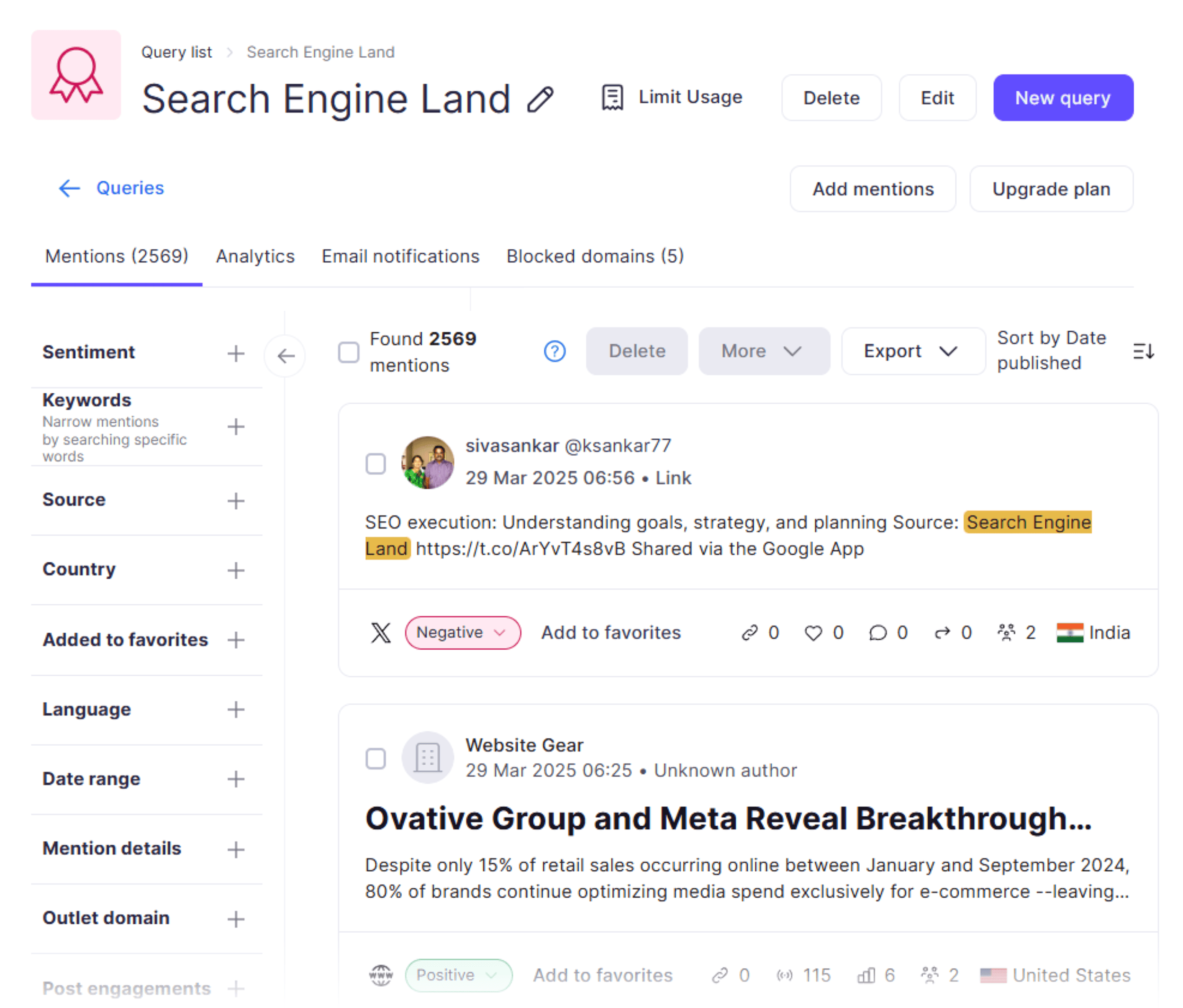
You can see mentions, estimated reach, and backlinks for each query you track.
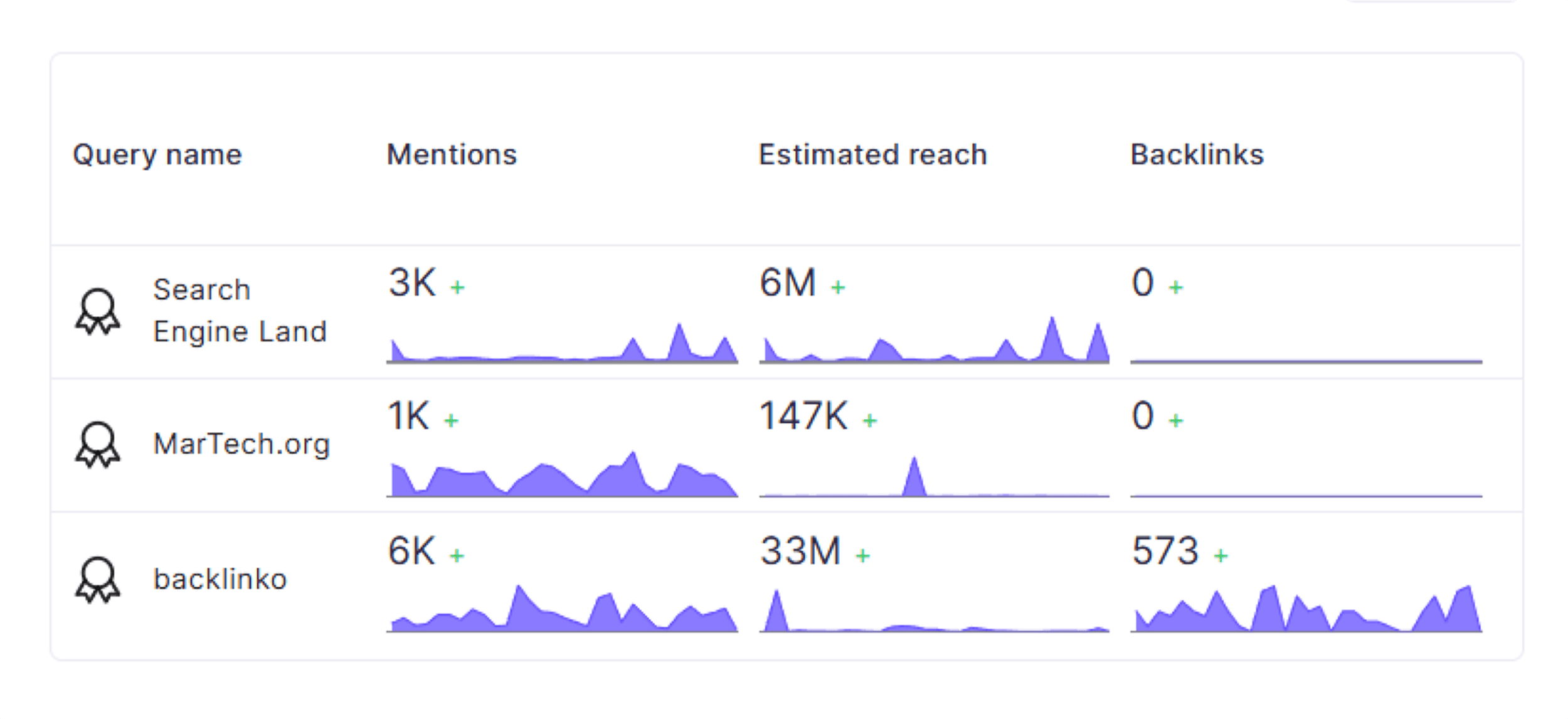
Publish Research-Backed Content
Research-backed content can directly help your off-page SEO by sending high-quality links your way.
For example, our search engine results study has accumulated 72.9K backlinks from 5.6K different domains so far.
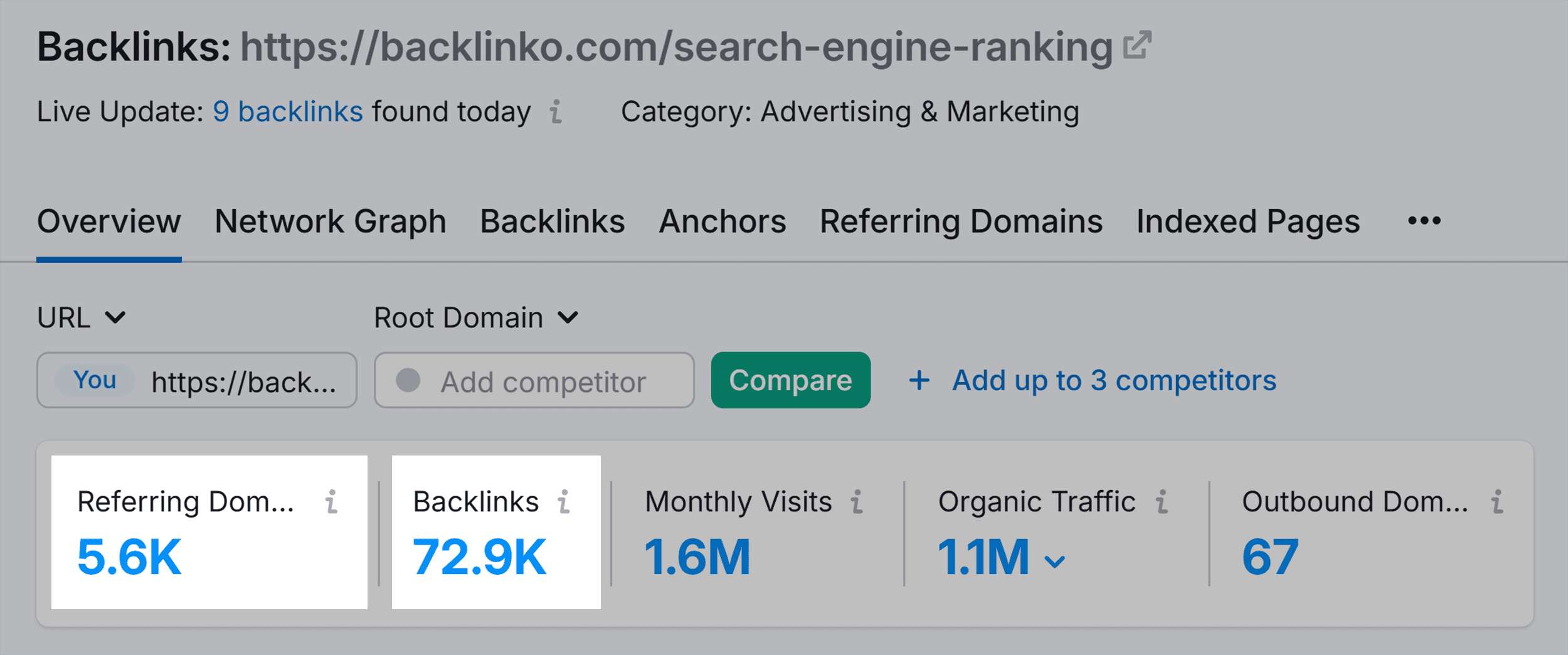
It also led to A TON of social media shares.
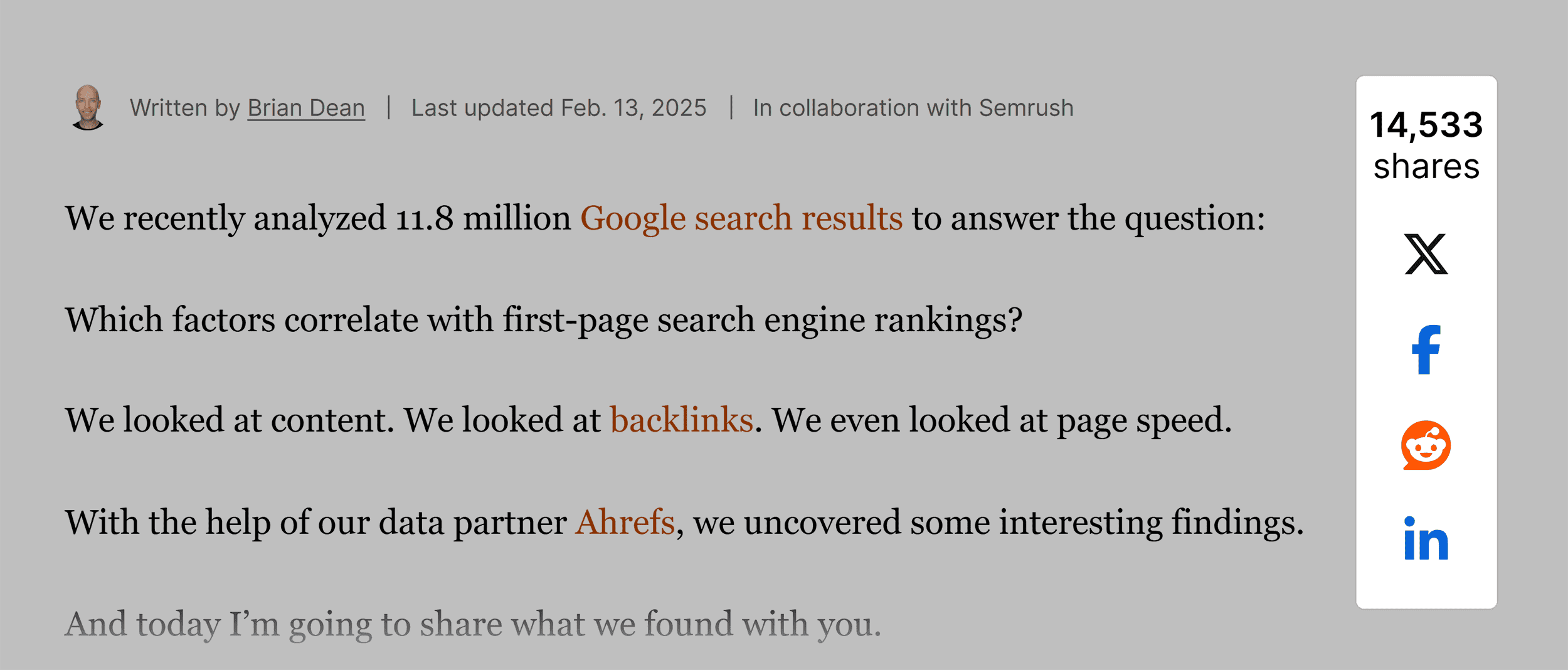
Do I think Google uses “social signals” to rank content?
No.
Google said long ago that social signals don’t help rankings.

Plus, they’re super easy to game. Anyone can go on Fiverr and buy 10,000 Instagram likes.
That said, social sharing can indirectly help your off-page SEO.
That’s because social shares get more eyeballs on your brand.
Which can lead to more branded searches and mentions.
For example, lots of people have mentioned and discussed our studies on SEO forums and marketing subreddits.

And I’m confident that most of these people first saw our study being shared on X (Twitter) or LinkedIn.
Chapter 4:Improve E-E-A-T

E-E-A-T has quickly become a super important off-page SEO ranking factor.
(Especially in YMYL niches.)
And despite what you may have heard, there’s A LOT more to E-E-A-T than adding a bunch of author bios to your site.
That’s because Google largely measures E-E-A-T based on signals that happen off of your website.
So, if you want to improve your site’s E-E-A-T, this chapter is for you.
Get Brand Mentions on Authority Sites
A while back, Google search team analyst Gary Illyes stated that both links AND mentions can help determine a site’s E-E-A-T.

So yeah, links are your best bet.
But I’ll take an unlinked mention if it’s on a big enough site.
For example, some years back, I was mentioned in The Globe and Mail.

And to get that mention, I had to email back and forth with the reporter a few times.
And do a 45-minute interview over the phone.
In the end, that coverage “only” landed me an unlinked mention.

Fortunately, the Globe and Mail is a huge newspaper in Canada. So, that mention probably still helped my off-page SEO.
Even though they didn’t link to me.
Get Links from Trusted “Seed Sites”
As we mentioned above, Google uses links to assess a site’s E-E-A-T.
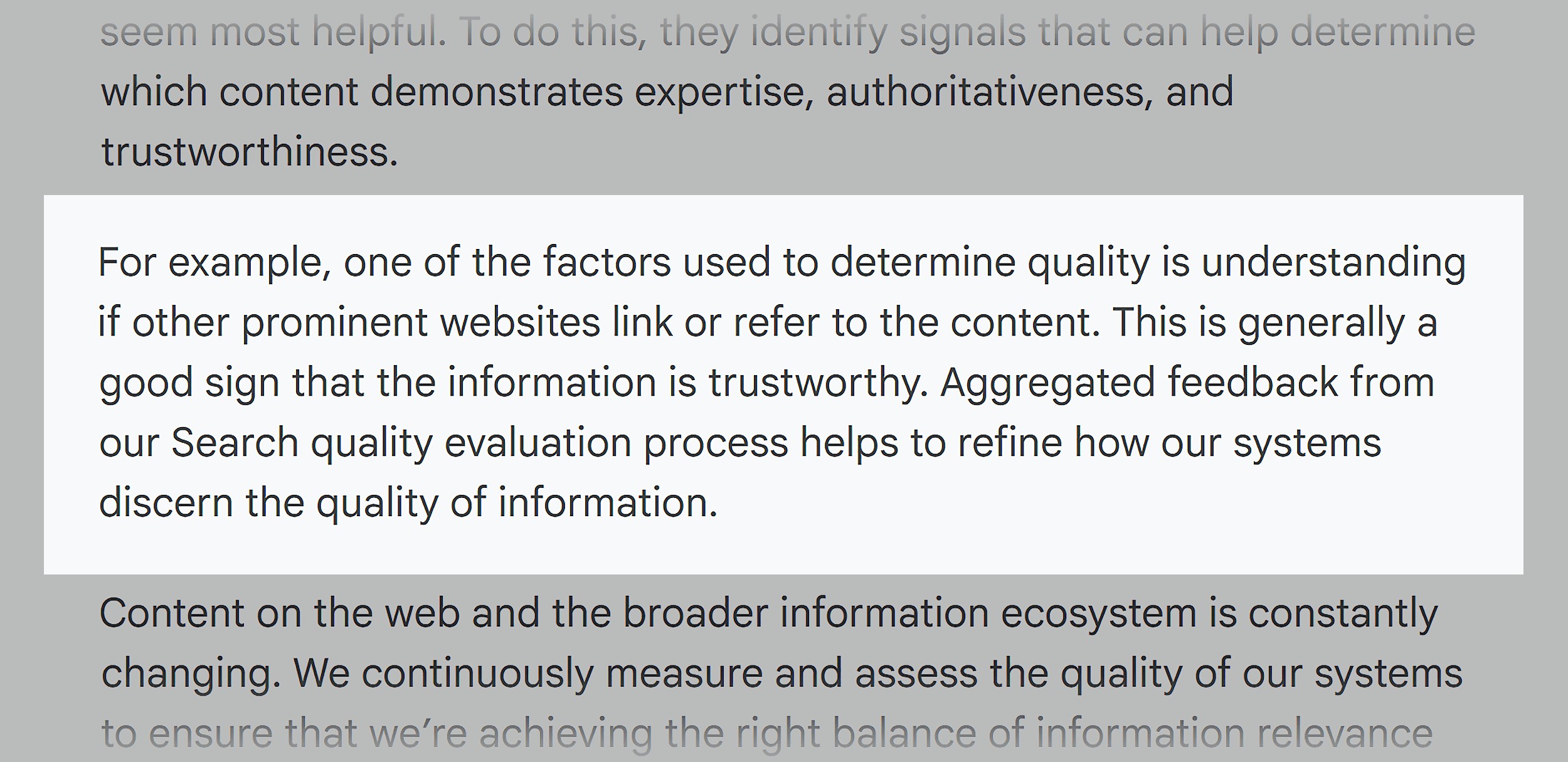
So, getting links from the NY Times and other authority sites is helpful.
But getting links from sites that have links from the NY Times can also help boost up your E-E-A-T.
Get Positive Reviews Online
Google’s Quality Rater guidelines put a lot of emphasis on online reviews.
Which makes sense:
If people hate your business, why would Google want to show your site to more people?
If you run a local business, you probably already know that reviews are huge for local SEO.
As it turns out, reviews also affect your site’s E-E-A-T in the eyes of Google.
If you don’t run a business that people review (like a blog or media site), Google relies on any awards you’ve won:
And how other experts in your field feel about your website:
For example, Rank Math listed Backlinko as one of the best SEO blogs to follow.
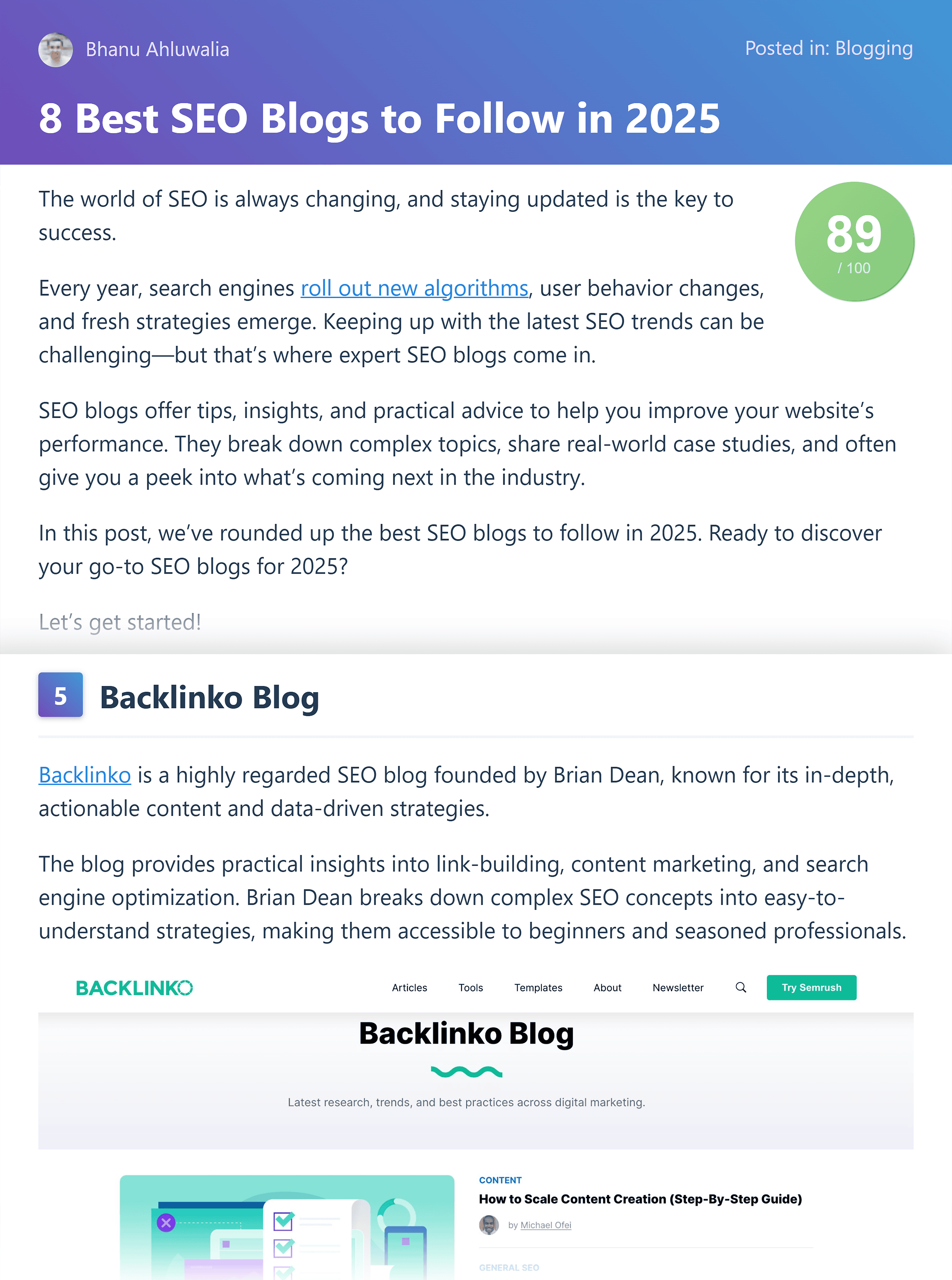
From a traditional SEO point of view, the only SEO benefit I get from this post is the backlink.
But it’s clear that Google probably also uses awards like this to determine my site’s E-E-A-T.
Chapter 5:Bonus Off-Page SEO Techniques
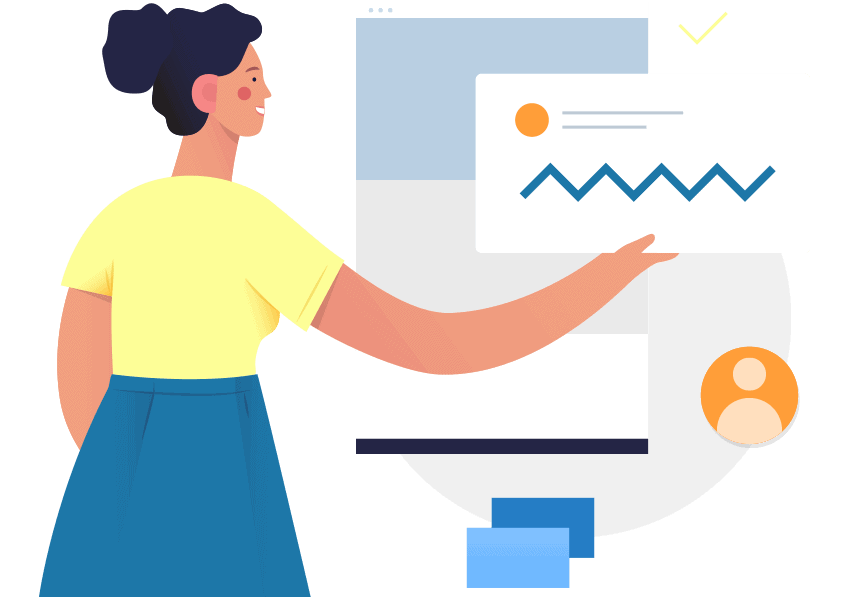
Now, it’s time for a list of super actionable off-page SEO strategies.
So if you’re ready to take action on what we covered so far, you’ll love this chapter.
Let’s dive right in.
Distribute Press Releases
Sending out a press release can directly lead to brand mentions and backlinks.
(It obviously helps if you have something newsworthy to share. But that’s another story. 🙂)
For example, some years ago, we had this press release syndicated around.

There was (obviously) a brand mention and a link in the release itself.
But more important than that, a handful of sites found out about our study from the press release.
Which led to even more links and brand mentions.

Participate in Roundup Posts
Roundup posts are a SUPER easy way to get links and mentions.
(Especially compared to traditional guest posting.)
As an example, some years ago, I submitted a quote to this expert roundup.

Which led to a solid (follow) link and another mention of my brand.

Get Interviewed
Getting interviewed on podcasts or on other websites is a powerful off-page SEO strategy.
For example, I was interviewed by a reputable blog about my biggest SEO lessons.
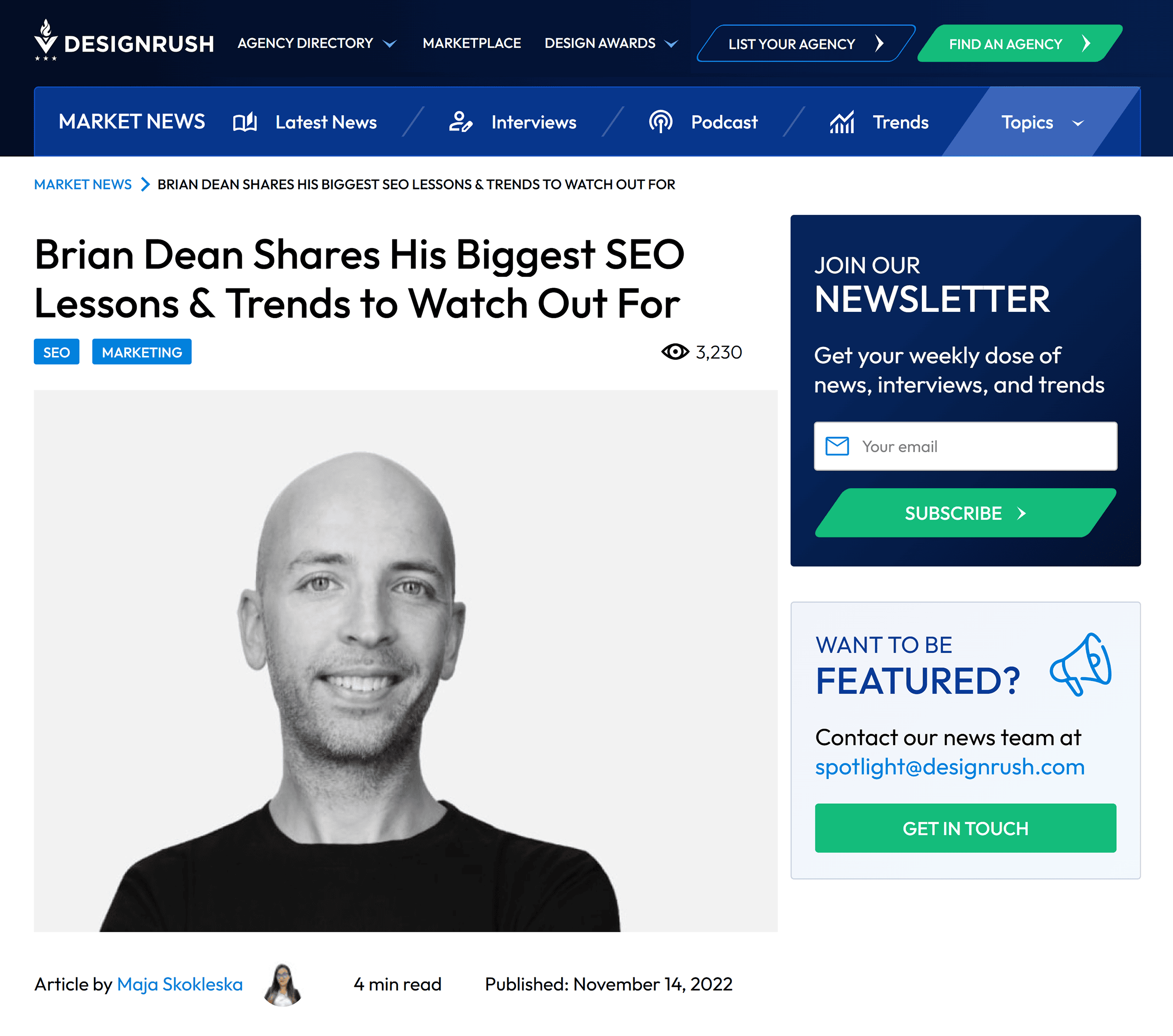
Sure, that interview came with a link.
But almost as important is the fact that Google sees Backlinko getting coverage on authority sites.
How about another example?
In 2024, I went on the podcast Content and Conversation: Organic Growth Insights from Siege Media.
The episode is available on Spotify:
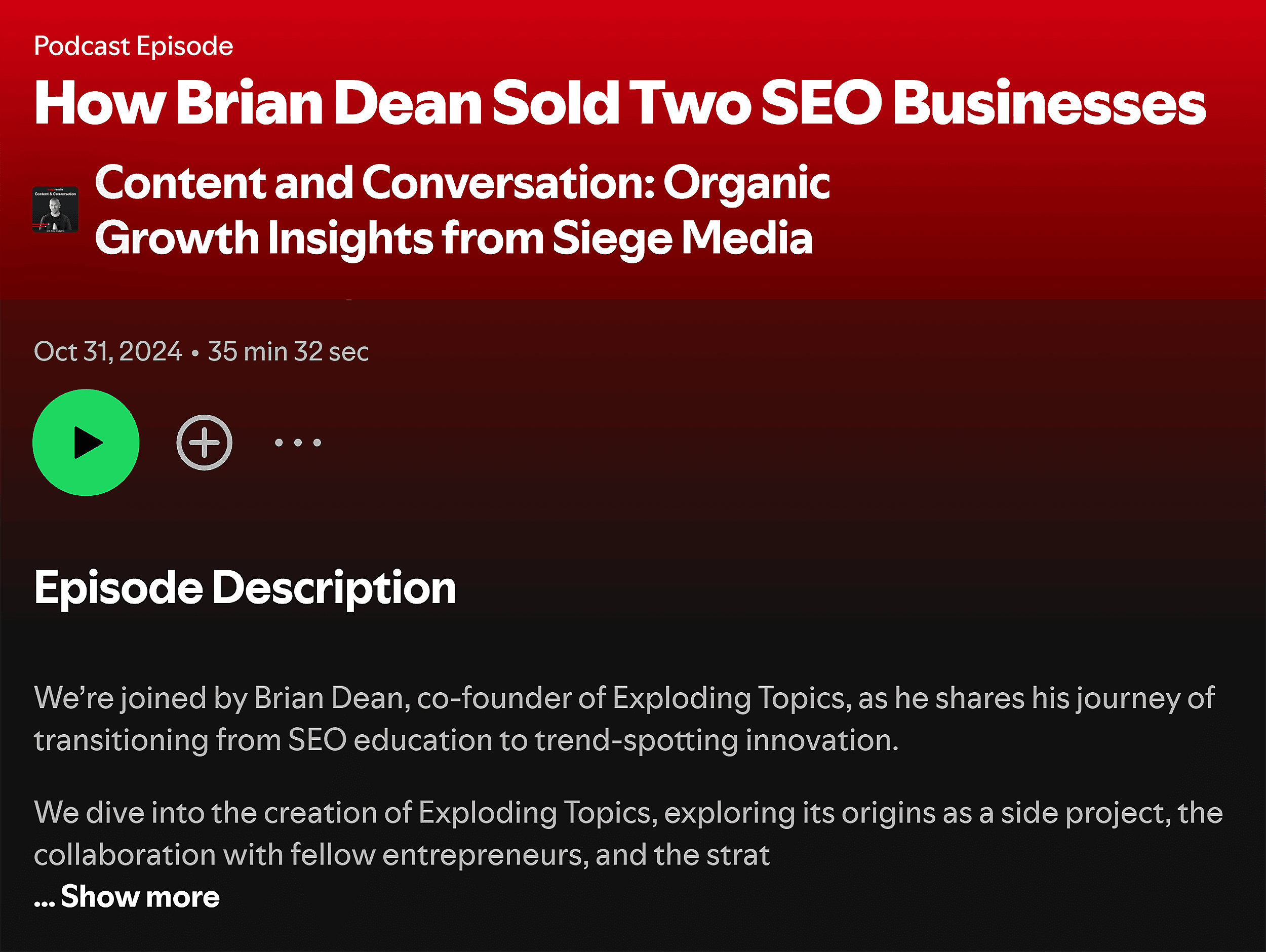
Siege Media’s website:
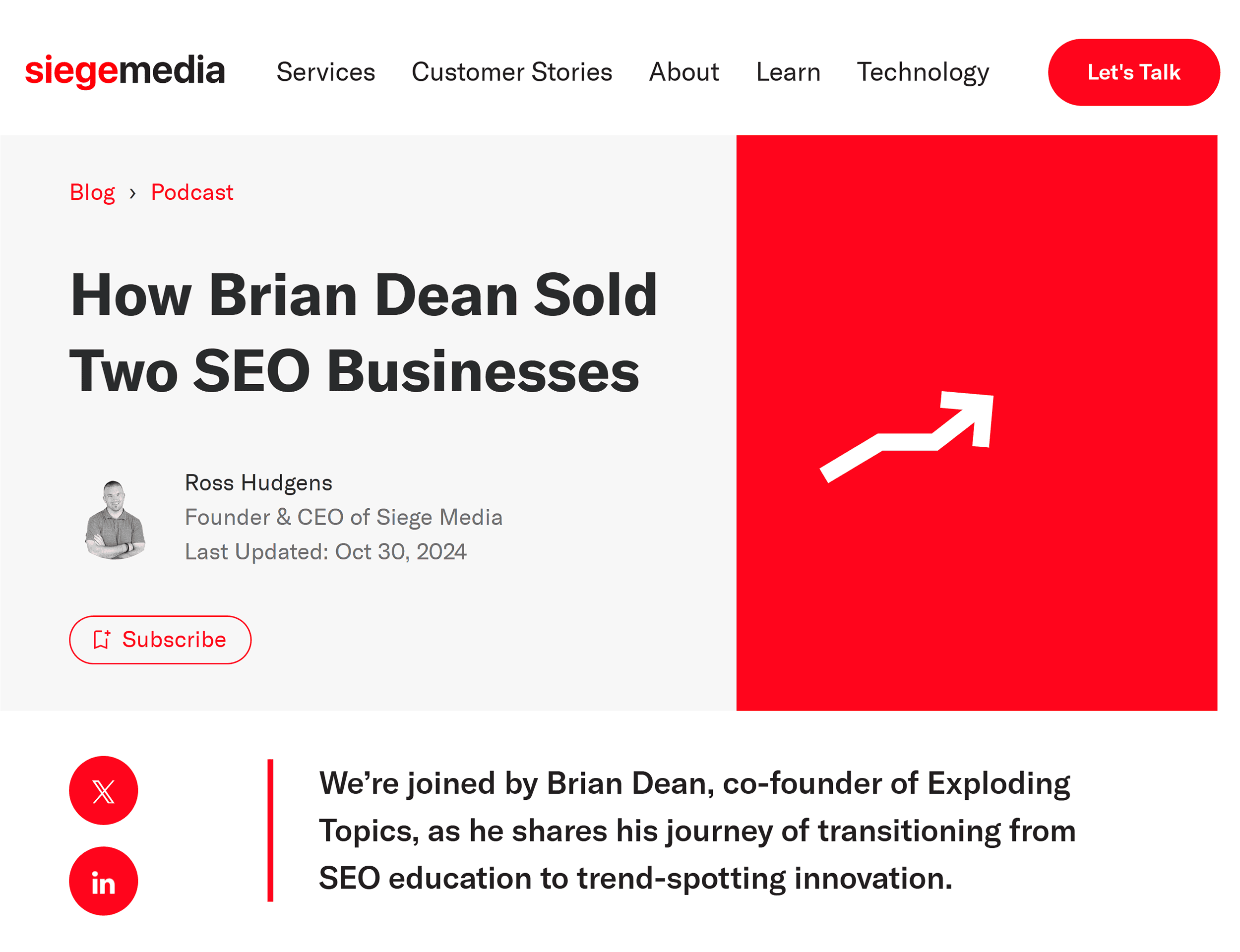
And YouTube:
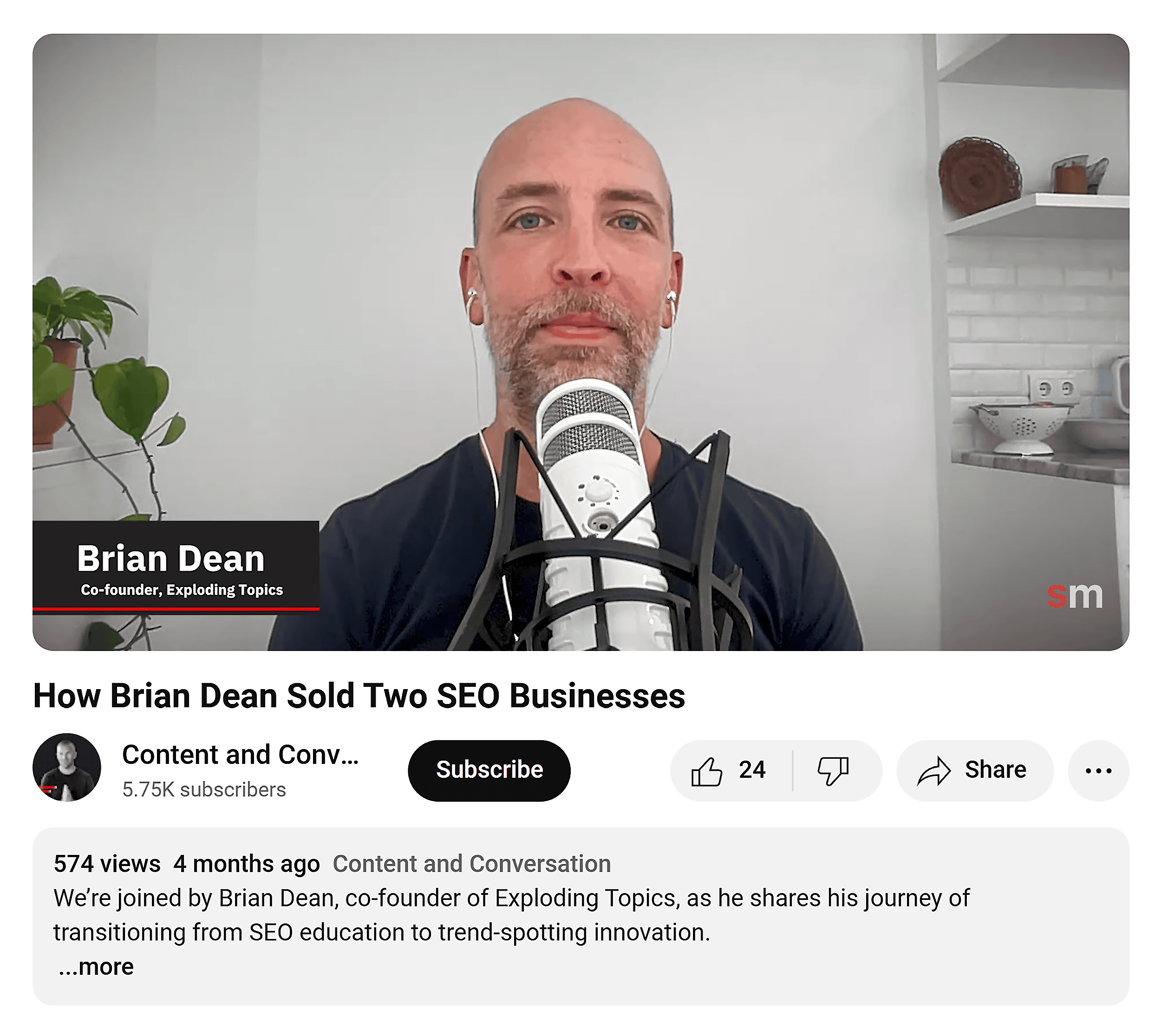
These various mentions expose me to a wider audience.
Which can lead to more branded searches.
And a boost in reputation in Google’s eyes.
Partner With Bigger Brands
You might think that big brands have no time for small business owners.
But you’d be wrong.
If you can provide legit value to a big brand, they’re usually happy to send some traffic your way.
For example, in the early days of Backlinko, I reached out to HubSpot. And I offered to create an infographic for them.

All they had to do on their end was to publish the infographic on their blog.
They agreed.
So I hired a designer on Upwork to create this infographic.

Not only did HubSpot publish the infographic on their blog (and promote it on social), but they agreed to have our logos side-by-side at the bottom of the image.

Needless to say, as a guy starting out in a competitive space, having the HubSpot logo next to my logo was a HUGE credibility booster.
Create Visuals That Other Blogs Can Use
Visual content is an awesome way to get other blogs to mention your site without needing to rely 100% on blogger outreach.
For example, in our guide on LSI keywords, I asked our designer to create this graphic.

As you can see, nothing fancy.
But it’s a helpful visual for people who aren’t familiar with how Google figures out the topic of a page.
Which led to people using that visual in their posts (and linking to our site as the original source).
In my experience, most people who use your image in their content will link to you.
Even if they don’t, you still get an unlinked brand mention out of the deal.

Which can still help your off-page SEO a little bit.
Chapter 6:Off-Page SEO Case Studies

This chapter is a collection of three case studies.
You’ll see how Daniel went from DA0 to DA48 in 90 days with ONE link-building strategy.
I’ll show you how Josh and Ash built SUPER high-quality links to their site using some pretty creative approaches that you probably haven’t tried yet.
Case Study #1
How Josh Used Broken Link Building to Get Links to His SaaS Tool
Josh Howarth is the co-founder (along with me) of ExplodingTopics.com.
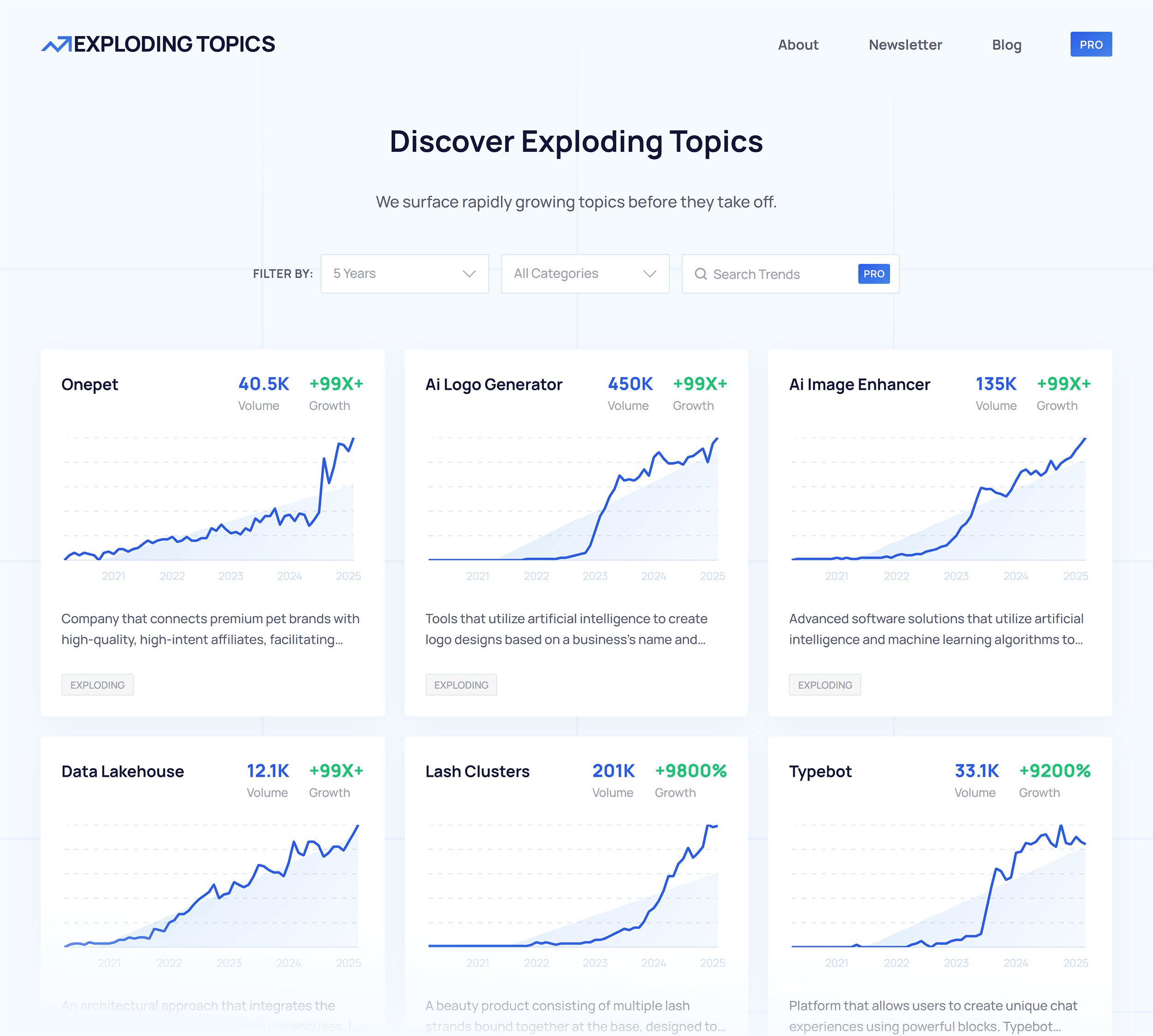
Back when Exploding Topics was brand new, Josh and I were both thinking of ways we could build links to our new site.
Then, one afternoon, I saw this:

A semi-popular tool called Google Correlate just shut down. Bingo!
The next day, Josh started sending out super-targeted broken link-building emails.

Even though Exploding Topics wasn’t a 1:1 replacement for Google Correlate, it was close enough to land Josh several decent links.

Not bad.
Case Study #2
How Daniel Skyrocketed His Domain Authority in 3 Months
Daniel Daines-Hutt runs Amp My Content, a content marketing agency.

Like most people, Daniel was initially tempted to build links to his agency site with guest posting.
But then he realized that there was an easier and more scalable way to build links:
Podcasts.
The issue was, Daniel wasn’t a big name in the marketing space. He was just getting his agency off the ground.
So: How was Daniel able to get on 60 podcasts in 90 days?
And take his Domain Authority from literally zero to DA48?
Insanely targeted email outreach.
For example, here’s one of the pitches that Daniel sent:

And because Daniel went the extra mile to personalize each email, people were happy to have him come on their shows.

Daniel started racking up backlinks left and right.
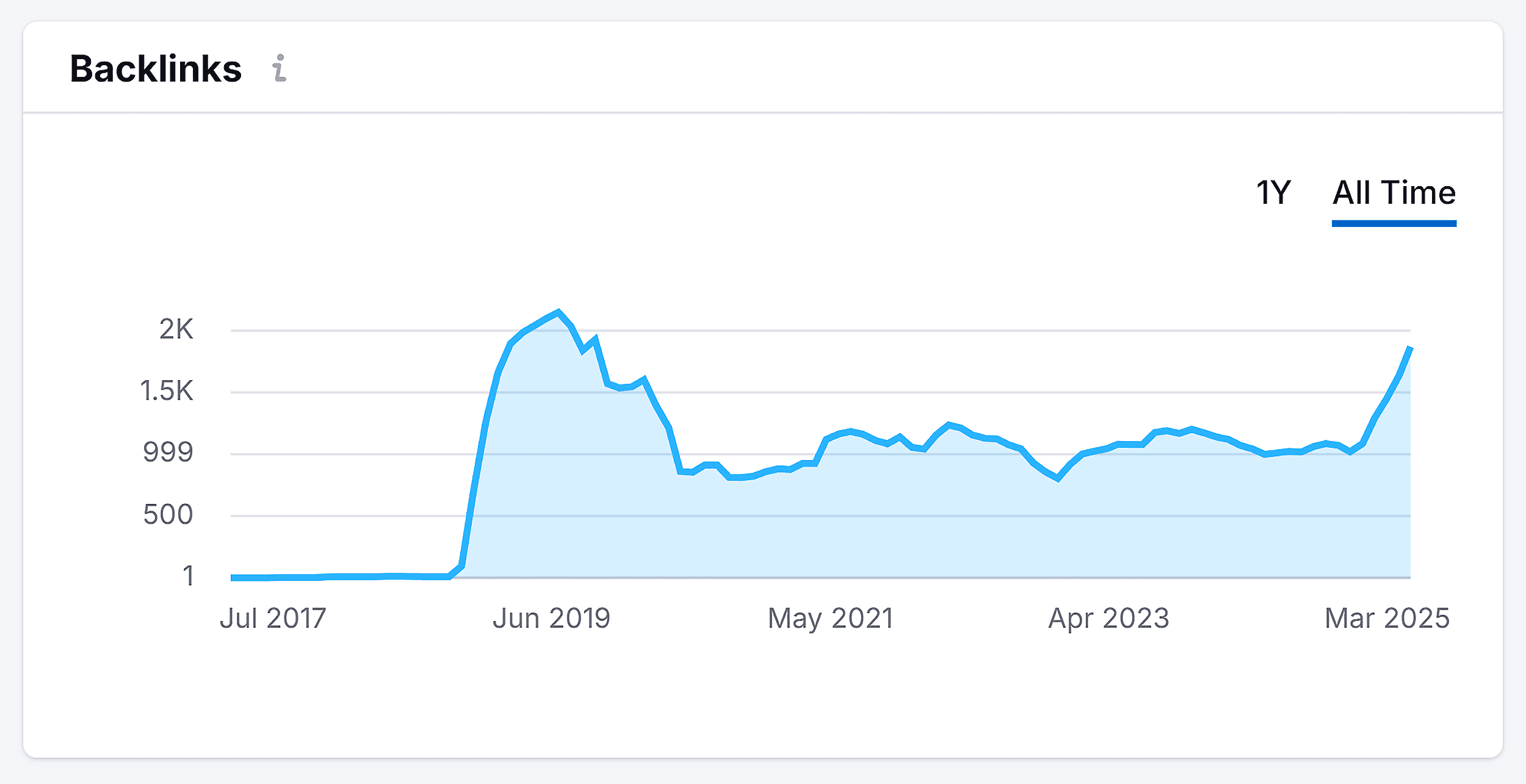
Which helped his site get some early SEO traction.
Case Study #3
How Ash Got Dozens of Media Features With Zero Marketing Budget
Ash Turner runs a mobile device trade-in site called BankMyCell.

Because Ash was bootstrapping his new site, he had essentially zero marketing budget.
But he DID have experience getting press for small businesses using surveys.
So the first thing Ash did was look for surveys in the mobile phone space that already got press coverage.

Then, once he found a successful survey, he popped it into an SEO tool to see which data points journalists cited most often in their coverage.
(Very clever.)
Next, Ash basically used The Skyscraper Technique on an existing survey and pushed out a bigger and better version of his own.

To get the word out, he created a press release with the key findings and sent it to journalists who covered the initial study.
And because he promoted super valuable content to people who WANTED to cover it, Ash racked up tons of authority links from sites like Forbes, New York Times, Spotify, The Guardian, and more.

Pretty cool.
Use On and Off-Page SEO Techniques for the Best Results

The strategies in this guide should give you everything you need to start improving your site’s off-page SEO signals.
Wondering where to go from here?
First, download our free off-page SEO checklist (if you haven’t already).
Then, focus on checking off the tasks one by one to increase brand awareness and authority.
Including:
- Building quality backlinks (focus on being a data source and creating link-worthy content)
- Increasing your brand signals (through YouTube, branded search tracking, and social visibility)
- Improving your E-E-A-T with authority mentions and positive reviews
Don’t forget:
Off-page SEO works best when combined with strong on-page optimization.
Check out this guide to make sure your content is well-optimized: The Definitive Guide to On-Page SEO.








